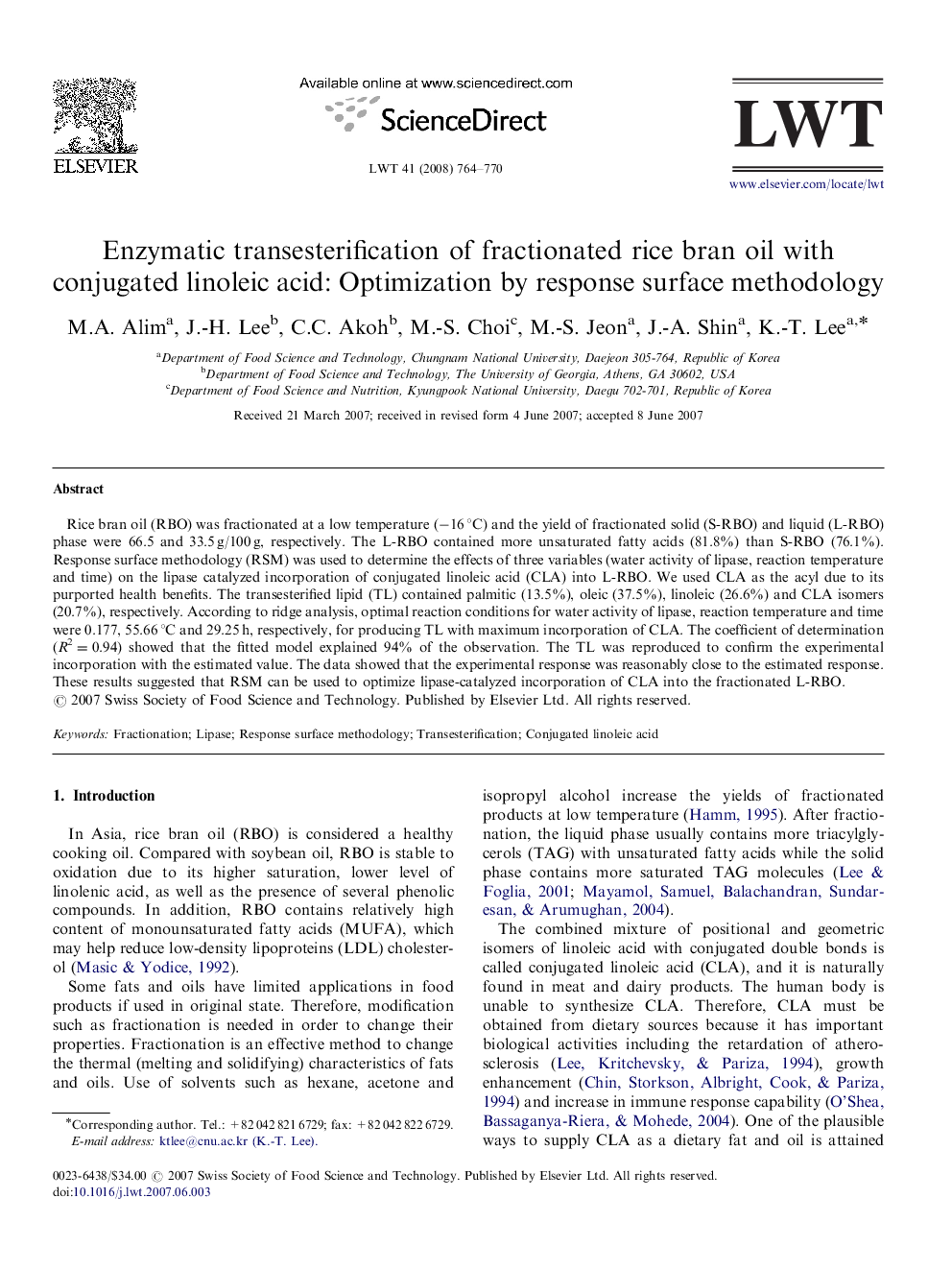| Article ID | Journal | Published Year | Pages | File Type |
|---|---|---|---|---|
| 4564259 | LWT - Food Science and Technology | 2008 | 7 Pages |
Abstract
Rice bran oil (RBO) was fractionated at a low temperature (â16 °C) and the yield of fractionated solid (S-RBO) and liquid (L-RBO) phase were 66.5 and 33.5 g/100 g, respectively. The L-RBO contained more unsaturated fatty acids (81.8%) than S-RBO (76.1%). Response surface methodology (RSM) was used to determine the effects of three variables (water activity of lipase, reaction temperature and time) on the lipase catalyzed incorporation of conjugated linoleic acid (CLA) into L-RBO. We used CLA as the acyl due to its purported health benefits. The transesterified lipid (TL) contained palmitic (13.5%), oleic (37.5%), linoleic (26.6%) and CLA isomers (20.7%), respectively. According to ridge analysis, optimal reaction conditions for water activity of lipase, reaction temperature and time were 0.177, 55.66 °C and 29.25 h, respectively, for producing TL with maximum incorporation of CLA. The coefficient of determination (R2=0.94) showed that the fitted model explained 94% of the observation. The TL was reproduced to confirm the experimental incorporation with the estimated value. The data showed that the experimental response was reasonably close to the estimated response. These results suggested that RSM can be used to optimize lipase-catalyzed incorporation of CLA into the fractionated L-RBO.
Related Topics
Life Sciences
Agricultural and Biological Sciences
Food Science
Authors
M.A. Alim, J.-H. Lee, C.C. Akoh, M.-S. Choi, M.-S. Jeon, J.-A. Shin, K.-T. Lee,
